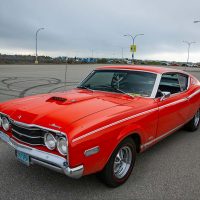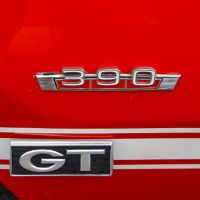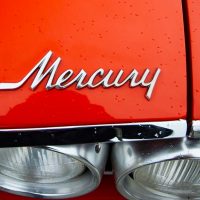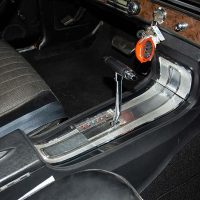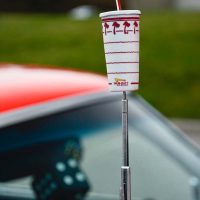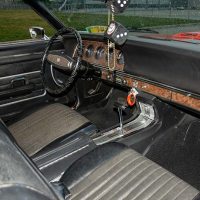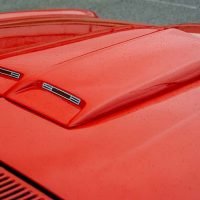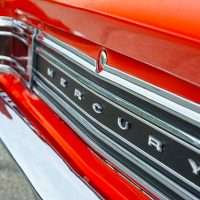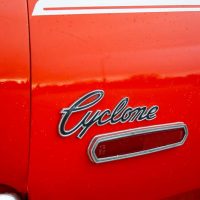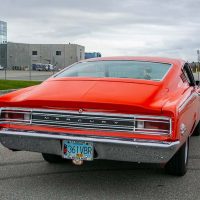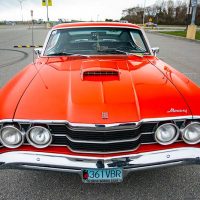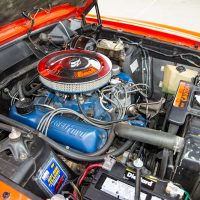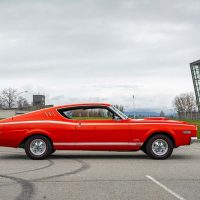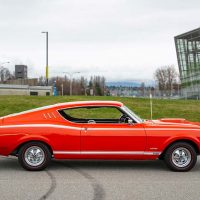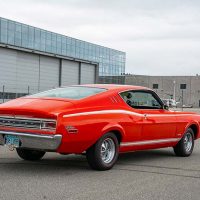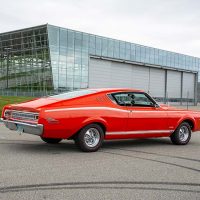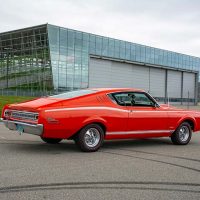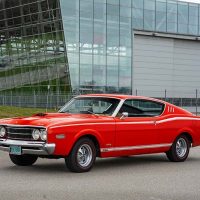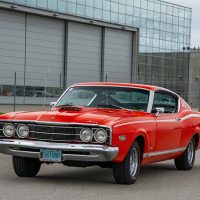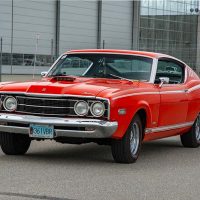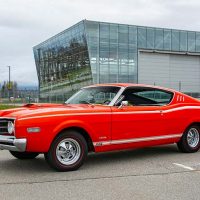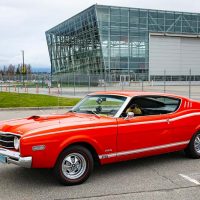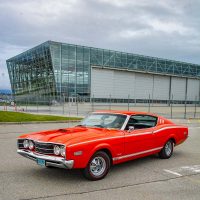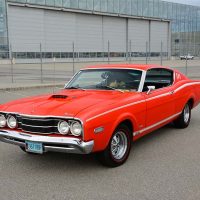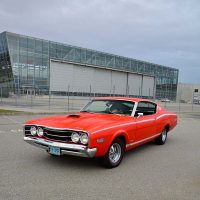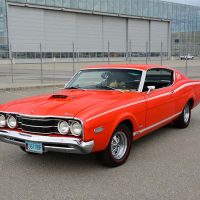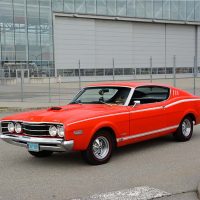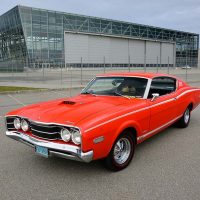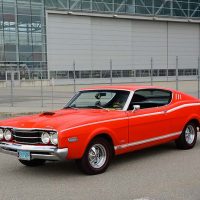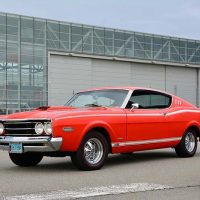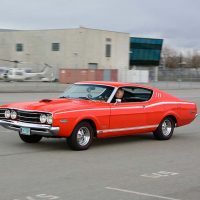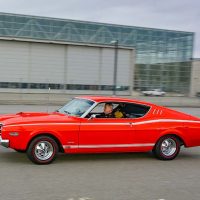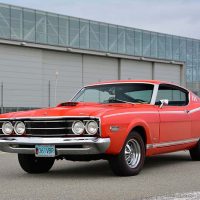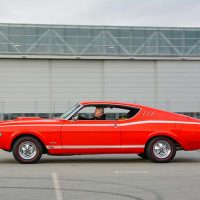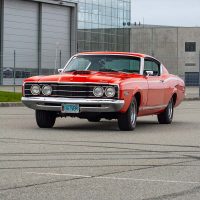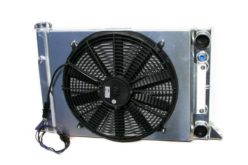Story and photos by Cam Hutchins
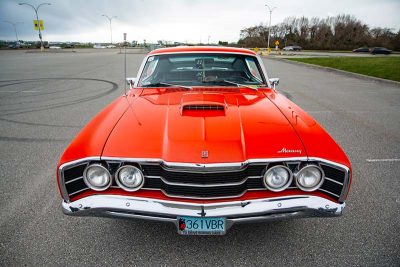
But the facts are cruel. With the increased sales to just over 13,000 1968 Cyclones, it was still a fraction of Ford’s similar Torino GT that sold over 74,000 fastbacks and over 5,000 convertibles. No Cyclone convertible was offered in 1968, and the Cyclone Coupe sold abysmally at 1,368 units in 1968, according to Hagerty.com.
But for a young Bill Blackall, fresh out of a stint in the Canadian Military as a linesman and now working for an up-and-coming electronics firm, Fridan business machines, the 1968 Mercury Cyclone GT was perfect. He was driving a Rambler Rebel and had his heart set on an AMX with a 390 and 4-speed. Before pulling the pin on the AMX, he went to see a buddy who was the sales manager at Totem Mercury Sales Ltd., the Lincoln-Mercury dealership on Marine Drive in Vancouver. He was shown the sales brochure for the Mercury Cyclone and was sold on the looks and that it had a backseat. The AMX had no back seat and the Cyclone not only had the 390, it would much better suit a young fella’ thinking of getting married.
The whole family deal seemed a long way off, but he liked the Cyclone enough to want one….but his buddy at Totem said none were available. Fate prevailed and on his way to a service call in Maple Ridge, he saw a Competition Orange Cyclone GT on the raised display at Metro Motors. He had a mobile Marine phone in his Rebel and called to say he was going to be late. He bought the Cyclone GT on the spot, or as “on the spot” as can be, with arranging a bank loan and trade-in of his Rebel. Blackall did call his buddy at Totem to have the car transferred, but Metro did not want to release the car.
Two days later, he took possession of his 1968 Mercury Cyclone GT with the 390 V8 and three speed automatic transmission. This car was spartanly equipped with a remote driver
‘s side mirror, and pushbutton AM radio with the dual rear deck speakers. It had vinyl buckets and carpet, a pretty bare bones car, but like almost all cars like this of the era, Blackall had an 8-track player installed under the dash. The hood scoop with turn signal indicators was added by Blackall. In early 1969, his wedding photos show the car all decorated up, sans the hood scoop. Blackall was moonlighting at the gas station by the Blue Boy Hotel in South Vancouver and ordered the parts from Totem Sales and installed the scoop himself.
The car even came equipped with the two-barrel carb instead of the four-barrel, and with hubcaps. It was a Cyclone GT with the additional badging and stripes and upgrades t
o the suspension. Shortly after buying the car, he was sent to school by his employer to learn about their extensive line of products. The school was located just north of San Francisco in San Leandro. Many weekends, he would leave school Friday afternoon and drive till 3a.m. to get home to visit his girlfriend. Then repeat the process Sunday afternoon in reverse to be back in school in California by 8 am..
The girlfriend became his wife in 1969, and Blackall went into real estate and drove the Cyclone as his business car until he bought an LTD in 1973, and the Cyclone became his wife’s car. In 1980, he sold the Cyclone GT to a friend of Blackall’s younger brother, Chris Murray who lived in Steveston. Years later, with the failure of the transmission, the car was parked beside Murray’s house and started its long process of decay. Moving on from the Mercury, Blackall was going all out working in Real Estate and still had his ’46 Ford that he bought in Ottawa while in High School.
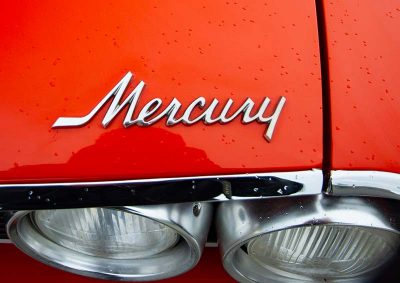
He wisely took the Cyclone to his friend Bill Grover, owner of W.S. Grover Auto Body in Richmond, who had painted his ’46 Ford for him. He asked him to restore the car for him, as the rust had ravished the car and it took lots of work to complete the restoration. Lots of the body panels were started with Torino panels and heavily modified to fit the Mercury.
All the mechanical parts were rebuilt and the engine got a new four-barrel Holley carb and manifold. The interior got a new headliner and carpets, but the door panels and seats were repaired. Some of the glass is still original but the windshield has been replaced. The wheels with hubcaps were upgraded to the optional wheels available in 1968 for owners that could afford them. The wheels were optional on the Montego and Cougars as well.
Many parts were sourced from Dearborn Classics and some mechanical parts were from Ford. The car was finished in June of 2013 and Blackall drives it on Veteran plates and uses it for promotional purposes for his Real Estate business. Collector plates are being considered for the future, but Blackall likes to be able to drive his car whenever he wants for advertising.
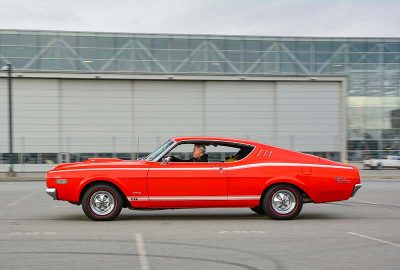
The slow sales probably did a lot to see the demise of the Cyclone GT after just a few short years. Blackall drives his car as often as he can and it is his go-to car for long trips. This includes trips throughout the Pacific Northwest, Calgary, Edmonton, and numerous trips to the interior. For some reason he has no plans to pack up at noon and drive all night to California, but he has the perfect ride if ever he decides to!






